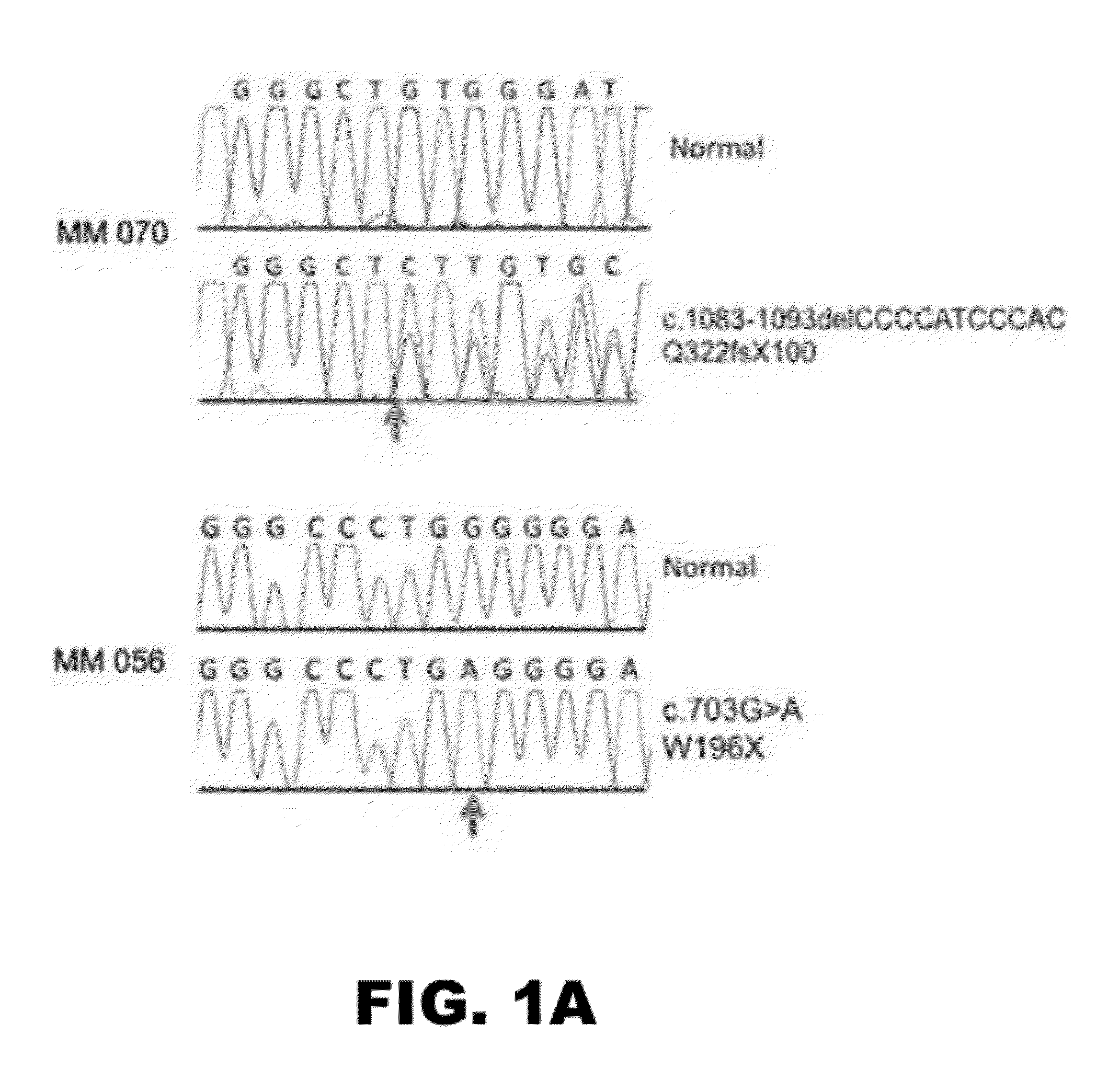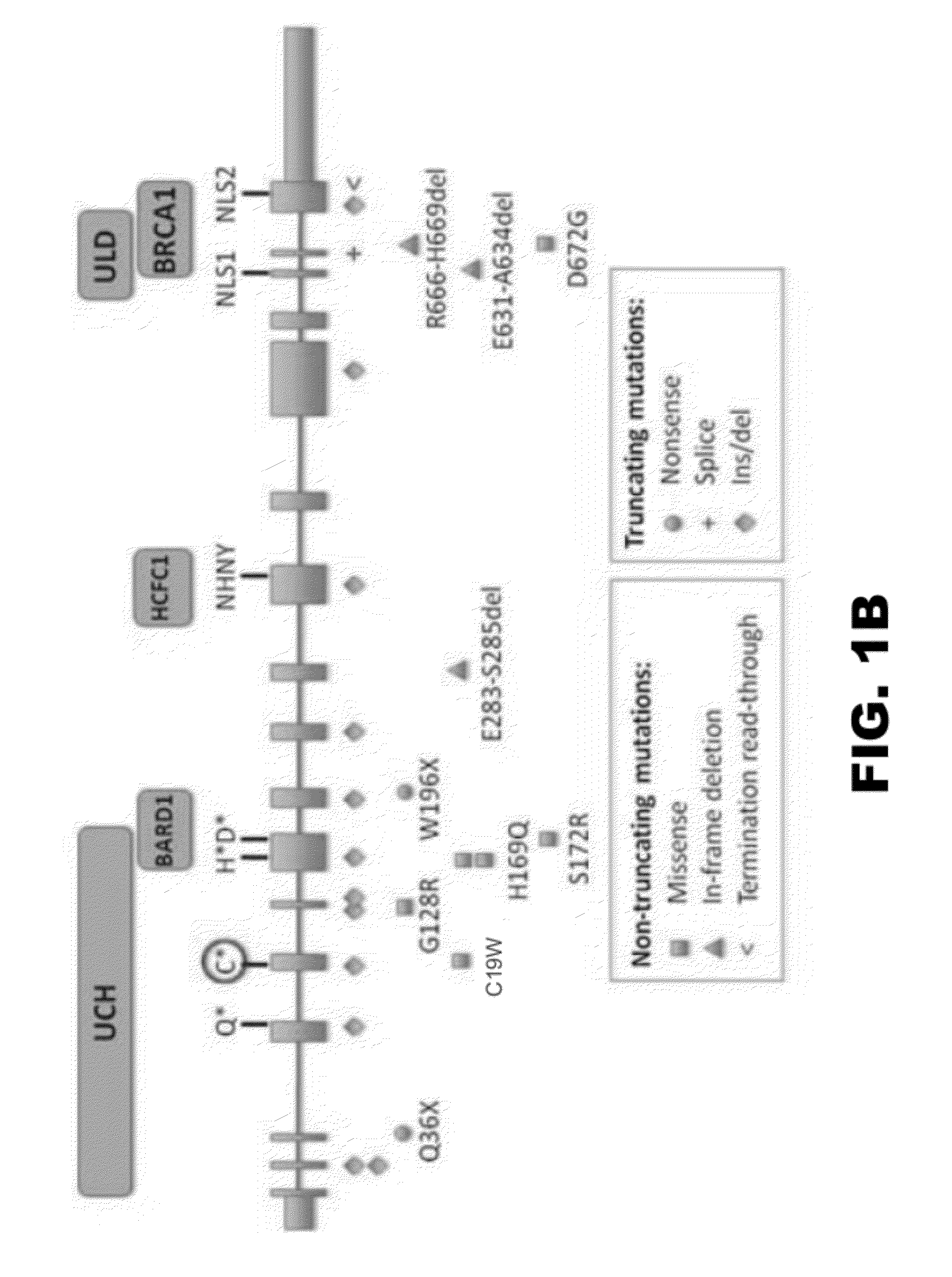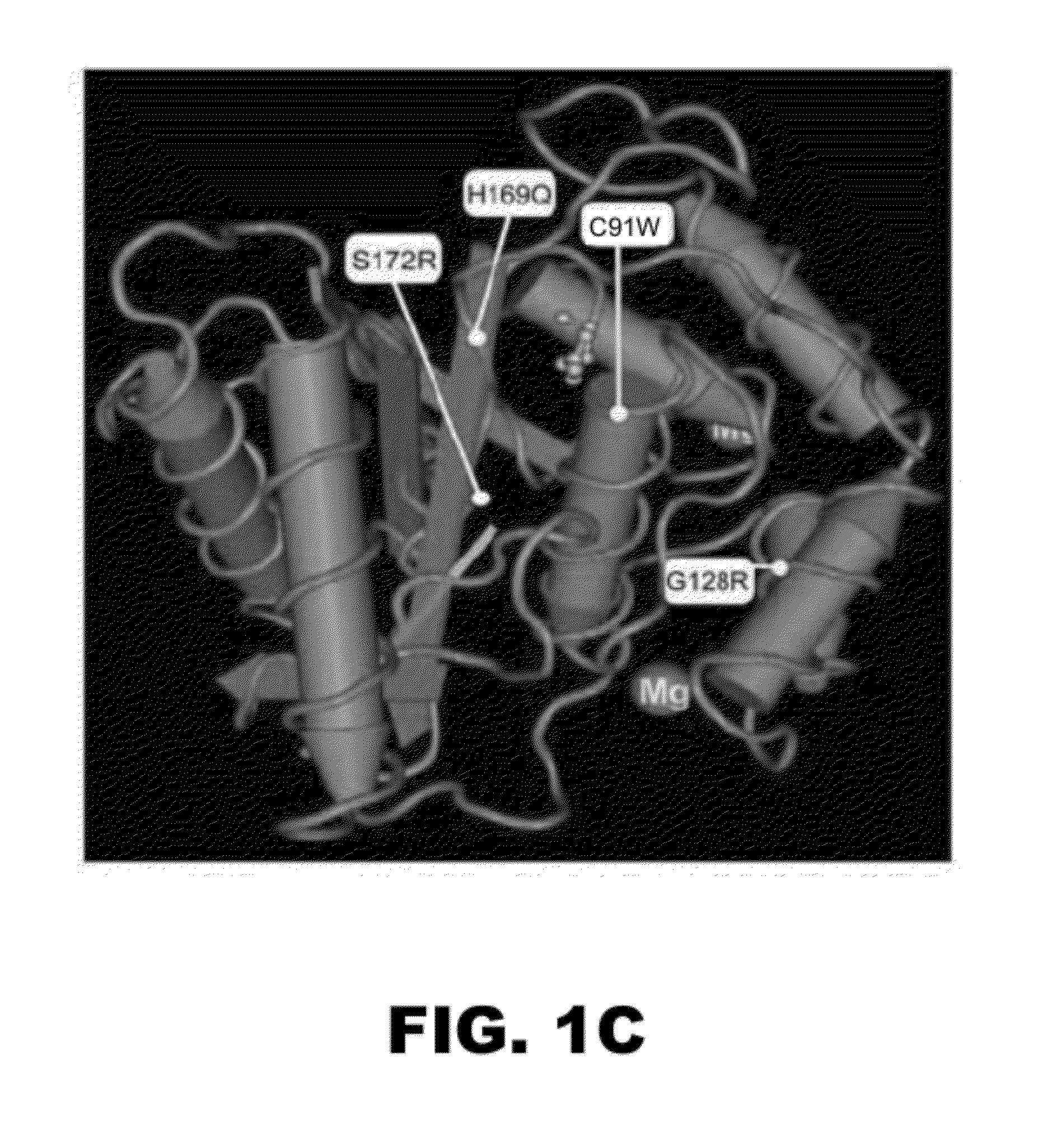Compositions and methods for detecting cancer metastasis
a technology of cancer metastasis and compositions, applied in the field of compositions and methods for detecting cancer metastasis, can solve the problems of increasing the risk of metastasis in the subject, and achieve the effect of increasing the risk of metastasis
- Summary
- Abstract
- Description
- Claims
- Application Information
AI Technical Summary
Benefits of technology
Problems solved by technology
Method used
Image
Examples
example 1
Materials and Methods for Example 1
Patient Materials
[0085]Acquisition of patient material (matched tumor and normal samples) has been described elsewhere (25) (Table 4). This study was approved by the Human Studies Committee at Washington University (St. Louis, Mo.), and informed consent was obtained from each subject. Tumor tissue was obtained immediately after eye removal, snap frozen, and prepared for RNA and DNA analysis. UM metastases were collected from liver biopsies at the time of metastatic diagnosis. All samples were histopathologically verified. Genomic DNA from tumors was prepared using the Wizard Genomic DNA Purification kit (Promega, Madison, Wis.). DNA from blood was isolated using the Quick Gene DNA whole blood kit S (Fugifilm, Tokyo, Japan). RNA was isolated using the PicoPure kit (including the optional DNase step). All RNA samples were converted to cDNA using the High Capacity cDNA Reverse Transcription kit from Applied Biosystems (Applied Biosystems Inc., Foster ...
example 2
Indirect Methods for Detecting BAP1 Loss
[0098]BAP1 loss leads to biochemical changes in the cell, such as histone H2A ubiquitination, that may be easier to detect and monitor than direct BAP1 activity.
[0099]BAP1 stable knockdown cells were produced using lentiviral vectors expressing a short hairpin RNA (shRNA) against BAP1 (FIG. 8). Both transient and stable knockdown of BAP1 lead to increased ubiquitination of histone H2A (FIG. 9). Thus, the measurement of histone H2A ubiquitination levels could be used as a surrogate indicator of BAP1 loss.
[0100]Stable knockdown of BAP1 also leads to a decrease in the RNA levels of melanocyte differentiation genes (FIG. 10). Transient knockdown of BAP1 leads to a decrease in proliferation (FIG. 11) as measured using a BrdU assay. In addition, loss of BAP1 in culture leads to decreased cell motility (FIG. 12) and a decreased growth in soft agar (FIG. 13). On the other hand, loss of BAP1 leads to an increased ability to grow in clonegenic assays (F...
example 3
Loss of BAP1 and Tumor Behavior in Mouse
[0101]Uveal melanoma cells stably knocked down for BAP1 using lentiviral expression of shRNA against BAP1 were implanted into mouse flank. Cells deficient for BAP1 grew less rapidly in the mouse flank compared to control cells infected with lentiviral vector expression shRNA against GFP (FIG. 16). After injection into the tail vein of mice, knockdown BAP1 cells exhibited decreased tumor growth (FIG. 17). These findings, coupled with the cell culture experiments above, indicate that the major effect of BAP1 loss in uveal melanoma is not increased proliferation, migration, motility or tumorigenicity upon flank injection.
PUM
| Property | Measurement | Unit |
|---|---|---|
| Mass | aaaaa | aaaaa |
| Mass | aaaaa | aaaaa |
| Mass | aaaaa | aaaaa |
Abstract
Description
Claims
Application Information
 Login to View More
Login to View More - R&D
- Intellectual Property
- Life Sciences
- Materials
- Tech Scout
- Unparalleled Data Quality
- Higher Quality Content
- 60% Fewer Hallucinations
Browse by: Latest US Patents, China's latest patents, Technical Efficacy Thesaurus, Application Domain, Technology Topic, Popular Technical Reports.
© 2025 PatSnap. All rights reserved.Legal|Privacy policy|Modern Slavery Act Transparency Statement|Sitemap|About US| Contact US: help@patsnap.com



